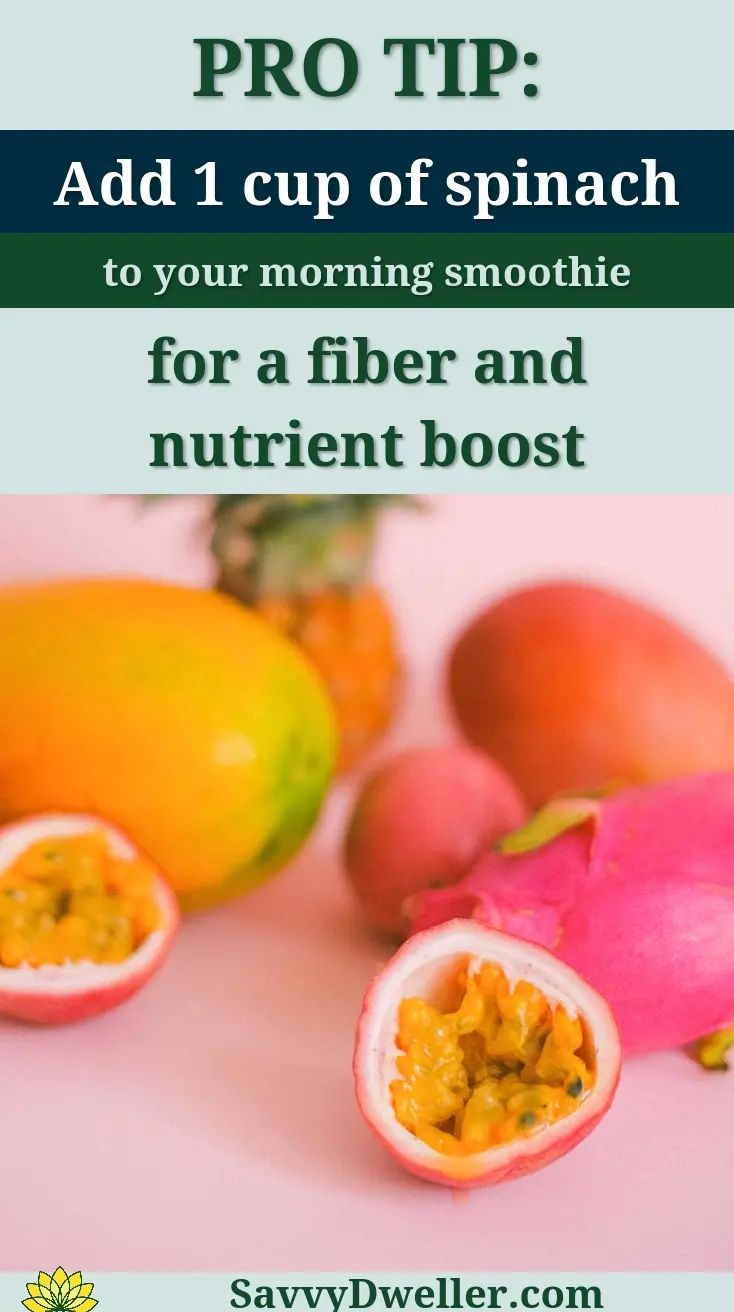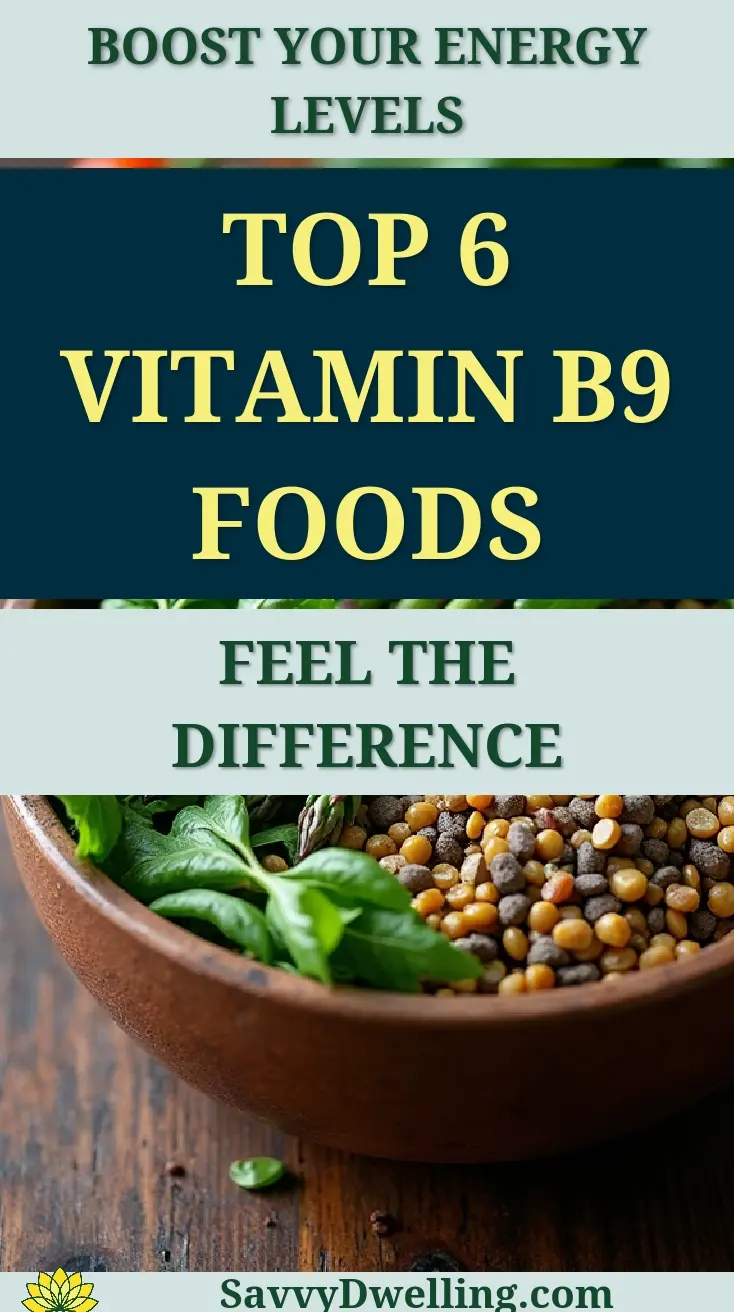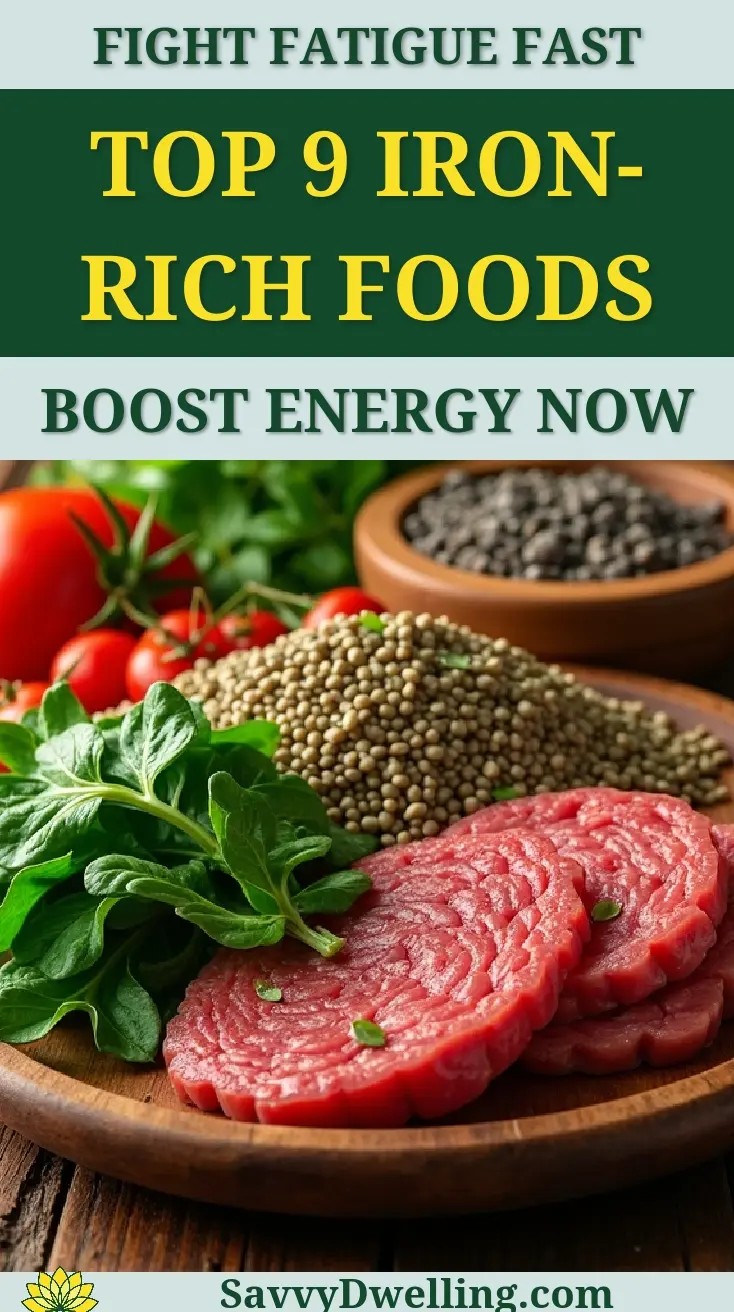How to Lose Belly Fat for Women (the 6 Best Foods to Eat)
Staring at your midsection in frustration because nothing seems to work? You’re not alone—belly fat is particularly stubborn for women due to hormonal changes, stress, and natural body composition differences. The constant cycle of restrictive diets and quick fixes often leaves you feeling defeated and even further from your goals.
This guide cuts through the confusion with six scientifically-backed foods that actually support belly fat reduction for women’s bodies. We’ve researched the complex science behind female fat storage and simplified it into practical, sustainable eating strategies you can start using today. No gimmicks, no impossible restrictions—just real foods that work with your body’s natural processes.
Contents
- At a Glance: The Best Solutions
- The Science Made Simple: Why Belly Fat Accumulates in Women
- 1. Fatty Fish (Salmon, Sardines, and Mackerel)
- 2. Greek Yogurt (High-protein, Low-sugar Varieties)
- 3. Leafy Greens (Spinach, Kale, and Arugula)
- 4. Beans and Legumes (Lentils, Chickpeas, and Black Beans)
- 5. Berries (Blueberries, Raspberries, and Blackberries)
- 6. Avocados (the Healthy Fat That Satisfies)
- Creating Your Belly-fat Fighting Meal Plan
- Common Mistakes to Avoid When Trying to Lose Belly Fat
- Frequently Asked Questions
- Final Words
At a Glance: The Best Solutions
Losing belly fat as a woman doesn’t require extreme measures or complicated diet plans. The most effective approach combines nutrient-dense foods that support your metabolism while keeping you satisfied throughout the day.
Your body responds best to foods that balance protein, healthy fats, and fiber-rich carbohydrates. These combinations help regulate blood sugar, reduce cravings, and support the fat-burning process your body naturally wants to perform.
Here are the six powerhouse foods that consistently help women reduce belly fat when incorporated into a balanced eating plan:
- Fatty Fish – Salmon, sardines, and mackerel provide omega-3 fatty acids that support fat metabolism and reduce inflammation
- Greek Yogurt – High-protein varieties help preserve muscle mass while promoting satiety and digestive health
- Leafy Greens – Spinach, kale, and arugula deliver fiber and nutrients with minimal calories to support weight management
- Beans and Legumes – Lentils, chickpeas, and black beans offer protein-fiber combinations that stabilize blood sugar
- Berries – Blueberries, raspberries, and blackberries provide antioxidants and natural sweetness without blood sugar spikes
- Avocados – Monounsaturated fats that enhance nutrient absorption and provide lasting satisfaction
Each of these foods works differently in your body to support belly fat reduction. Some boost your metabolism, others help control appetite, and many provide the building blocks your body needs to maintain lean muscle mass during weight loss.
The key is understanding how to prepare and combine these foods in ways that fit your lifestyle and taste preferences. You don’t need to eat foods you dislike or follow restrictive meal plans that leave you feeling deprived.
The Science Made Simple: Why Belly Fat Accumulates in Women
Understanding Visceral Vs. Subcutaneous Fat
Your body stores fat in two distinct ways that affect how you lose belly fat for women. Subcutaneous fat sits directly under your skin and feels soft when you pinch it. This type of fat creates that “muffin top” appearance but poses fewer health risks.
Visceral fat, however, wraps around your internal organs deep within your abdominal cavity. This hidden fat releases inflammatory compounds that can disrupt your metabolism and hormone balance. You can’t pinch visceral fat, but it’s often responsible for that firm, protruding belly appearance.
Women typically carry more subcutaneous fat than men, especially in the hips and thighs. But hormonal shifts can redirect fat storage toward the midsection, increasing both types of belly fat women experience.
How Hormones Affect Fat Storage in Women
Estrogen acts like your body’s fat traffic controller, directing where calories get stored as fat. During your reproductive years, estrogen favors your hips and thighs over your belly. As estrogen levels decline during perimenopause and menopause, fat storage shifts dramatically toward your midsection.
Cortisol, your stress hormone, compounds this problem by promoting visceral fat accumulation. Chronic stress keeps cortisol elevated, making it harder to lose stomach fat in women even with proper diet and exercise.
Insulin resistance also plays a major role in women belly fat accumulation. When your cells become less responsive to insulin, your body stores more calories as fat, particularly around your waistline.
Why Spot Reduction Doesn’t Work
Your body doesn’t burn fat from specific areas just because you exercise those muscles. Fat loss occurs systematically throughout your entire body based on genetics, hormones, and overall calorie balance. This means endless crunches won’t directly eliminate belly fat.
The best way to lose belly fat for women involves creating a caloric deficit through proper nutrition and full-body movement. Your genetics determine where fat comes off first and last, but consistency with the right foods will eventually reduce belly fat for women.
Understanding this principle helps set realistic expectations and focuses your efforts on proven strategies rather than wasted time on spot-reduction myths.

1. Fatty Fish (Salmon, Sardines, and Mackerel)
How Omega-3s Support Fat Loss
Omega-3 fatty acids work like tiny metabolic switches that help your body burn fat more efficiently. These essential fats reduce inflammation in fat cells, allowing them to release stored energy more readily. This process is particularly beneficial for reducing visceral fat around your organs.
EPA and DHA, the two most potent omega-3s found in fatty fish, also support hormone balance. They help regulate cortisol levels and improve insulin sensitivity, both crucial factors in how to lose belly fat for women quickly.
Regular consumption of omega-3s can boost your metabolic rate by up to 14%. This means your body burns more calories at rest, creating the caloric deficit needed for sustainable fat loss.
Best Types Of Fatty Fish for Women
Wild-caught salmon provides the highest concentration of omega-3s with minimal mercury exposure. Sockeye and coho varieties offer the best nutrient profiles for women focused on belly fat reduction.
Sardines pack incredible nutritional density in a small package. They’re also one of the most sustainable fish choices and naturally low in mercury. Canned sardines in water make an affordable, convenient option for busy women.
Mackerel, particularly Atlantic varieties, delivers impressive omega-3 levels. However, avoid king mackerel due to higher mercury content. Spanish mackerel offers a milder flavor for those new to eating fatty fish.
Simple Preparation Methods
The key to making fatty fish a regular part of your routine lies in simple, foolproof cooking methods. Baking requires minimal prep time and delivers consistent results without added fats. This cooking method preserves the omega-3 content while creating tender, flaky fish.
Pan-searing with minimal oil creates a crispy exterior while keeping the interior moist. Use a cast-iron skillet for even heat distribution and better flavor development.
Quick Baked Salmon Recipe
- Preheat your oven to 425°F and line a baking sheet with parchment paper
- Pat salmon fillets dry and brush lightly with olive oil
- Season with salt, pepper, and your choice of herbs (dill, thyme, or rosemary work well)
- Bake for 12-15 minutes depending on thickness (fish should flake easily with a fork)
- Serve immediately with a squeeze of fresh lemon
Sardine Salad Bowl Ideas
- Mediterranean Bowl: Mixed greens, cherry tomatoes, cucumber, red onion, olives, and canned sardines with lemon-herb dressing
- Asian-Inspired Bowl: Shredded cabbage, carrots, edamame, and sardines with sesame-ginger vinaigrette
- Power Greens Bowl: Spinach, arugula, avocado slices, and sardines with olive oil and balsamic vinegar
- Protein-Packed Bowl: Quinoa base with roasted vegetables, sardines, and tahini dressing
Also See: The Top 25 Calcium-rich Foods for Strong Bones
2. Greek Yogurt (High-protein, Low-sugar Varieties)
Why Protein Aids Belly Fat Reduction
Protein requires more energy to digest than carbohydrates or fats, creating a metabolic advantage for fat loss. This thermic effect of food can boost your metabolism by 20-30% for several hours after eating. Greek yogurt provides this protein punch in a convenient, versatile form.
High-protein foods also trigger the release of hormones that signal fullness to your brain. GLP-1 and peptide YY help control appetite and reduce cravings for high-calorie snacks that contribute to belly fat accumulation.
The casein protein in Greek yogurt digests slowly, providing steady amino acids to your muscles. This sustained protein supply helps preserve lean muscle mass during weight loss, keeping your metabolism elevated.
Choosing the Right Greek Yogurt
Look for plain, unsweetened varieties with at least 15 grams of protein per serving. Flavored yogurts often contain 15-20 grams of added sugar, which can sabotage your belly fat loss goals by spiking insulin levels.
Full-fat Greek yogurt provides better satiety than low-fat versions. The healthy fats help slow digestion and keep you satisfied longer, reducing the likelihood of overeating later.
Check the ingredient list for minimal additives. Quality Greek yogurt should contain only milk and live active cultures. Avoid products with thickeners, artificial sweeteners, or excessive stabilizers.
Creative Ways to Enjoy Greek Yogurt
Transform plain Greek yogurt into satisfying meals and snacks that support your belly fat loss goals. Use it as a protein-rich base for both sweet and savory applications throughout your day.
Replace sour cream, mayonnaise, or cream-based sauces with Greek yogurt to cut calories while boosting protein. This simple swap can save 100-200 calories per serving while enhancing the nutritional value of your meals.
Breakfast Parfait Combinations
- Berry Protein Power: Greek yogurt layered with mixed berries, chopped almonds, and a drizzle of sugar-free maple syrup
- Tropical Paradise: Yogurt with diced mango, unsweetened coconut flakes, and crushed macadamia nuts
- Chocolate Indulgence: Yogurt mixed with unsweetened cocoa powder, topped with fresh strawberries and dark chocolate chips
- Savory Start: Yogurt with cucumber, cherry tomatoes, fresh herbs, and everything bagel seasoning
Savory Yogurt Dips and Dressings
- Herb Ranch: Greek yogurt with dried dill, garlic powder, onion powder, and fresh chives
- Spicy Sriracha: Yogurt mixed with sriracha sauce, lime juice, and a touch of honey
- Mediterranean Tzatziki: Yogurt with grated cucumber, minced garlic, lemon juice, and fresh dill
- Curry Yogurt Sauce: Yogurt with curry powder, turmeric, ginger, and a pinch of cayenne
3. Leafy Greens (Spinach, Kale, and Arugula)
Think of leafy greens as nature’s broom for your digestive system. These powerhouse vegetables work overtime to support your body’s natural fat-burning processes while delivering more nutrients per calorie than almost any other food.
If you’ve been struggling with belly fat, incorporating more leafy greens into your meals can be one of the simplest changes you make. Just one cup of spinach contains only 7 calories but delivers folate, iron, and vitamins A, C, and K that support healthy metabolism.
How Fiber Supports Weight Management
Fiber acts like a metabolic matchmaker, connecting your hunger signals with your satiety hormones. When you eat fiber-rich leafy greens, your stomach expands slowly, sending “full” signals to your brain before you overeat.
The soluble fiber in kale and arugula forms a gel-like substance in your digestive tract, slowing down sugar absorption and preventing blood sugar spikes that trigger fat storage. This steady energy release helps your body burn stored belly fat instead of constantly craving quick energy from sugary snacks.
Women need about 25 grams of fiber daily, yet most get only half that amount. Adding two cups of mixed greens to your daily meals provides about 4 grams of quality fiber.
Nutrient Density for Optimal Health
Leafy greens deliver what nutrition experts call “nutrient density” – maximum vitamins and minerals with minimal calories. This combination is crucial for women trying to lose belly fat because restrictive diets often create nutrient gaps.
Spinach contains nitrates that support healthy blood flow, potentially improving exercise performance. Kale provides glucosinolates, compounds that support your liver’s detoxification processes. Arugula delivers peppery flavor compounds that may help regulate blood sugar levels naturally.
These nutrients work together to optimize your metabolism, ensuring your body efficiently burns stored fat instead of holding onto it.
Easy Ways to Add More Greens
Adding leafy greens doesn’t mean forcing yourself to eat boring salads every day. Small, consistent additions throughout your meals create lasting habits without feeling restrictive.
Start with familiar foods and sneak greens in gradually. Your taste buds adapt within about two weeks of regular exposure to new flavors.
Green Smoothie Formulas
Green smoothies mask the taste of leafy greens while delivering concentrated nutrition. The key is balancing greens with naturally sweet ingredients.
Try this beginner-friendly ratio: 1 cup spinach, 1/2 frozen banana, 1/2 cup berries, and 1 cup unsweetened almond milk. The fruit sweetness completely masks any “green” taste.
- Tropical blend: Spinach + pineapple + mango + coconut water
- Chocolate version: Kale + banana + unsweetened cocoa powder + almond milk
- Protein boost: Arugula + apple + Greek yogurt + cinnamon
- Hydrating mix: Spinach + cucumber + lime + mint + water
Wilted Greens Side Dishes
Wilted greens cook in under five minutes and pair with virtually any protein. Heat breaks down tough fibers, making nutrients more bioavailable.
Basic method: Heat 1 teaspoon olive oil in a large pan, add 4 cups fresh greens, and cook until just wilted (2-3 minutes). Season with garlic, lemon juice, and a pinch of sea salt.
- Mediterranean style: Spinach + sun-dried tomatoes + pine nuts + feta
- Asian fusion: Kale + sesame oil + ginger + low-sodium tamari
- Italian inspired: Arugula + balsamic vinegar + parmesan + red pepper flakes
- Comfort version: Spinach + caramelized onions + turkey bacon bits

4. Beans and Legumes (Lentils, Chickpeas, and Black Beans)
Beans and legumes are like having a personal trainer for your digestive system. They work your metabolism harder than most foods, requiring extra energy to digest while delivering sustained fullness that naturally reduces overall calorie intake.
Research shows women who eat legumes regularly have smaller waist circumferences compared to those who don’t. One cup of cooked lentils provides 18 grams of protein and 15 grams of fiber for just 230 calories.
The Protein-fiber Power Combination
The magic happens when plant-based protein meets high fiber content in a single food. This combination creates what nutritionists call the “thermic effect” – your body burns more calories digesting beans than it does processing refined carbohydrates.
Legumes contain resistant starch, a special type of carbohydrate that feeds beneficial gut bacteria while resisting digestion in your small intestine. This process produces compounds that may help regulate fat storage hormones.
The protein in beans also helps preserve lean muscle mass during weight loss. More muscle means a higher resting metabolic rate, helping you burn belly fat even while sleeping.
Best Legumes for Digestive Comfort
Many women avoid beans due to digestive concerns, but choosing the right varieties and preparation methods eliminates most issues. Some legumes are naturally gentler on your system.
Lentils digest most easily because they don’t require soaking and cook quickly. Red lentils break down almost completely during cooking, making them ideal for sensitive stomachs.
- Gentlest options: Red lentils, split peas, black-eyed peas
- Moderate tolerance: Green lentils, chickpeas, navy beans
- Gradual introduction: Black beans, kidney beans, pinto beans
- Digestive aids: Rinse canned beans, add digestive spices like cumin or fennel
Meal Prep Ideas With Beans
Batch cooking legumes once or twice per week sets you up for quick, satisfying meals that support belly fat reduction. Cooked beans stay fresh in your refrigerator for five days.
Cook 2-3 cups of dried legumes at once, then portion into 1-cup servings for easy meal assembly throughout the week. This strategy saves time and ensures you always have protein-rich options available.
One-Pot Lentil Soups
Lentil soups deliver complete nutrition in one bowl while requiring minimal cooking skills. The liquid helps you feel full faster, naturally supporting portion control.
Basic formula: 1 cup dried lentils + 3 cups low-sodium broth + 2 cups chopped vegetables + herbs and spices. Simmer 25-30 minutes until lentils are tender.
- Heat 1 tablespoon olive oil in a large pot
- Sauté 1 diced onion, 2 carrots, and 2 celery stalks for 5 minutes
- Add 1 cup red lentils, 4 cups vegetable broth, and 1 can diced tomatoes
- Season with cumin, turmeric, and black pepper
- Simmer 20 minutes, stir in 2 cups spinach before serving
Roasted Chickpea Snacks
Roasted chickpeas satisfy crunchy cravings while delivering protein and fiber. They’re perfect for women who tend to snack on processed foods that promote belly fat storage.
One batch lasts all week when stored in an airtight container. A 1/2-cup serving provides 6 grams of protein and 5 grams of fiber for about 120 calories.
- Preheat oven to 425°F
- Drain and rinse 2 cans chickpeas, pat completely dry
- Toss with 2 tablespoons olive oil and seasonings of choice
- Spread on baking sheet in single layer
- Roast 20-30 minutes until golden and crispy, shaking pan halfway through
5. Berries (Blueberries, Raspberries, and Blackberries)
Berries are nature’s candy with a secret weapon against belly fat. Unlike processed sweets that spike insulin and promote fat storage, berries deliver natural sweetness alongside compounds that actively support your metabolism.
Studies suggest women who eat berries regularly have lower levels of inflammatory markers linked to abdominal weight gain. One cup of raspberries contains 8 grams of fiber and only 60 calories, making them incredibly filling for their size.
Antioxidants and Metabolism Support
The deep colors in berries come from anthocyanins, powerful antioxidants that may help regulate genes involved in fat burning. These compounds work at the cellular level to optimize how your body processes and stores energy.
Blueberries contain pterostilbene, a compound that may help activate proteins responsible for breaking down fat and sugar. Blackberries provide ellagic acid, which research suggests may help prevent the formation of new fat cells. Not only are blueberries delicious, but they also pack a punch when it comes to health benefits. In fact, they are linked to numerous advantages, making them a star player in the world of superfoods.
The vitamin C in berries also supports healthy cortisol levels. Elevated cortisol from chronic stress is strongly linked to increased belly fat storage in women.
Managing Natural Sugar Intake
While berries contain natural sugars, their high fiber content slows sugar absorption, preventing the blood sugar roller coaster that leads to cravings and fat storage. This makes them ideal for women trying to lose belly fat without feeling deprived.
The key is portion awareness. A serving size is typically 3/4 to 1 cup of fresh berries. Eating berries with a small amount of protein or healthy fat further slows sugar absorption and increases satiety.
Pair berries with Greek yogurt, a small handful of nuts, or incorporate them into protein smoothies for balanced blood sugar response.
Fresh Vs. Frozen Berry Options
Both fresh and frozen berries offer similar nutritional benefits, making frozen varieties an excellent budget-friendly option. Frozen berries are picked at peak ripeness and flash-frozen, often preserving more nutrients than fresh berries that travel long distances.
Choose unsweetened frozen berries without added syrups or sugars. Frozen berries work perfectly in smoothies, oatmeal, and yogurt, while fresh berries are ideal for snacking and salads.
Buy fresh berries when they’re in season and on sale, then freeze extras yourself for year-round availability.
Berry Breakfast Ideas
Starting your day with berries sets a positive tone for stable blood sugar and sustained energy. The fiber and natural sweetness help prevent mid-morning energy crashes that lead to poor food choices.
Mix berries into existing breakfast foods rather than eating them alone for better blood sugar balance and increased satisfaction.
- Overnight oats: 1/2 cup oats + 1/2 cup Greek yogurt + 1/2 cup berries + cinnamon
- Protein pancakes: Blend 1 banana + 2 eggs + 1/4 cup oats, top with fresh berries
- Chia pudding: Mix chia seeds + almond milk + vanilla, layer with berries
- Smoothie bowl: Thick berry smoothie topped with nuts, seeds, and coconut flakes
Healthy Berry Dessert Alternatives
Berries satisfy sweet cravings naturally while supporting your belly fat goals. These dessert alternatives prevent the all-or-nothing mindset that often derails women’s weight loss efforts.
Frozen berries eaten straight from the freezer have an ice cream-like texture and intense flavor that satisfies dessert cravings with minimal calories.
- Berry “nice cream”: Blend frozen berries + 1 frozen banana until smooth
- Chocolate berry mousse: Greek yogurt + unsweetened cocoa + berries + stevia
- Baked berries: Warm berries with cinnamon and a drizzle of honey
- Berry parfait: Layer berries with whipped Greek yogurt and crushed nuts
6. Avocados (the Healthy Fat That Satisfies)
Many women avoid avocados when trying to reduce belly fat, fearing their high calorie content. This is one of the biggest misconceptions in weight management. In fact, the health benefits of avocados, including healthy fats and fiber, can be beneficial for weight loss. Including them in your diet can help support a balanced approach to eating.
Avocados contain monounsaturated fats that actually support your body’s ability to burn belly fat more effectively. These healthy fats work differently than processed fats found in packaged foods.
How Monounsaturated Fats Aid Weight Loss
Monounsaturated fats in avocados trigger hormonal responses that help reduce belly fat women often struggle with. Research shows these fats increase levels of hormones that signal fullness to your brain.
Your body processes these healthy fats more efficiently than saturated fats. This means you feel satisfied longer and naturally eat fewer calories throughout the day. Choosing the right types of fats is crucial for maintaining a balanced diet. Exploring the differences between healthy and unhealthy fats can help in making better food choices.
The oleic acid in avocados specifically targets abdominal fat stores. This compound helps activate genes responsible for fat burning in your midsection.
Portion Control With Avocados
One-quarter to one-half of a medium avocado provides the ideal serving size for women focused on belly fat reduction. This portion delivers approximately 80-160 calories of nutrient-dense energy.
Use the palm-size method: your cupped palm holds about one-quarter avocado’s worth of healthy fats. This visual guide helps prevent overconsumption while ensuring adequate nutrition.
Pair your avocado portion with protein and fiber to maximize satiety. This combination keeps blood sugar stable and prevents afternoon cravings that derail weight loss efforts.
Beyond Toast: Creative Avocado Uses
Avocado toast became popular for good reason, but limiting yourself to this preparation misses countless opportunities. Creative uses help you incorporate this belly fat-fighting food without boredom.
Replace mayonnaise with mashed avocado in sandwiches and wraps. This swap eliminates inflammatory oils while adding metabolism-supporting nutrients.
Avocado-Based Salad Dressings
Blend one-quarter avocado with lemon juice, herbs, and water for creamy dressings without dairy. This base works with cilantro-lime, herb-garlic, or tahini variations.
These dressings help your body absorb fat-soluble vitamins from leafy greens. The healthy fats enhance nutrient uptake while supporting your metabolism.
Smoothie Bowl Toppings
Dice cold avocado over berry smoothie bowls for contrasting textures and sustained energy. The combination provides both quick and slow-releasing fuel for your workouts.
Frozen avocado chunks blend seamlessly into green smoothies, creating creamy texture without bananas’ extra sugars. This technique works especially well with spinach-based blends.
Creating Your Belly-fat Fighting Meal Plan
Planning meals strategically makes the difference between temporary results and lasting belly fat reduction. Your meal plan should work with your hormones, not against them.
Successful meal planning for women requires balancing the 6 best foods to eat to lose belly fat with your daily routine and preferences. Rigid plans often fail because they ignore real-life flexibility needs.
Building Balanced Plates
Divide your plate into three sections: half for leafy greens and non-starchy vegetables, one-quarter for lean protein, and one-quarter for complex carbohydrates. Add healthy fats as condiments or cooking oils.
This plate method naturally incorporates foods that burn belly fat for women while controlling portions. Visual portioning eliminates the need for complicated calorie counting.
Include one item from the six belly fat-fighting foods at each meal. Rotate between fatty fish, Greek yogurt, leafy greens, beans, berries, and avocados throughout your day.
Portion Guidelines for Women
Women’s protein needs range from 0.8 to 1.2 grams per kilogram of body weight daily. A 140-pound woman requires approximately 51-77 grams of protein spread across meals and snacks.
Fiber intake should reach 25 grams daily for optimal belly fat reduction. Leafy greens, beans, and berries easily meet this target when included regularly.
Healthy fat portions should equal 1-2 thumbs per meal. This includes avocado slices, nuts, olive oil, or the natural fats in fatty fish.
Sample Daily Menu Ideas
Morning meals might feature Greek yogurt with berries and a sprinkle of ground flaxseed. This combination provides protein, probiotics, and fiber to start your metabolism.
Lunch could include a large spinach salad topped with chickpeas, avocado, and olive oil dressing. This meal delivers multiple belly fat-fighting foods while keeping you satisfied until dinner.
Evening meals work well with baked salmon, roasted vegetables, and a small portion of quinoa. The omega-3s from fish support overnight recovery and hormone balance.
7-Day Meal Planning Template
Plan three meals and one snack daily, rotating through the six key foods systematically. This prevents boredom while ensuring consistent nutrient intake.
- Monday: Focus on fatty fish and leafy greens
- Tuesday: Emphasize Greek yogurt and berries
- Wednesday: Feature beans and avocados
- Thursday: Rotate back to fish with different preparations
- Friday: Greek yogurt-based meals with varied toppings
- Saturday: Bean-based dishes with seasonal vegetables
- Sunday: Meal prep day incorporating all six foods
Common Mistakes to Avoid When Trying to Lose Belly Fat
Even with the best foods for women to lose belly fat, certain approaches can sabotage your efforts. Understanding these pitfalls helps you avoid months of frustration and plateaus.
The biggest mistake women make is expecting dramatic changes within the first week or two. Sustainable belly fat reduction follows a predictable but gradual timeline.
Eliminating Entire Food Groups
Cutting out carbohydrates, fats, or other macronutrients creates nutritional imbalances that slow your metabolism. Your body needs all three macronutrients to function optimally and burn belly fat efficiently.
Extreme restrictions trigger survival responses that make your body hold onto fat stores. This biological protection mechanism works directly against your belly fat reduction goals.
Instead of elimination, focus on choosing higher-quality options within each food group. Replace refined grains with beans and legumes, processed fats with avocados, and sugary snacks with berries. Including foods high in antioxidants can further enhance health benefits, promoting overall well-being. Berries, for example, are not only delicious but also rank among the top foods high in antioxidants.
Focusing Only on “Fat-burning” Foods
No single food melts belly fat independently of your overall eating pattern and lifestyle. The 6 best foods to eat to lose belly fat work as part of a comprehensive approach.
Relying solely on these foods while ignoring portion sizes and meal timing limits your results significantly. Balance and consistency matter more than perfect food choices.
These nutrient-dense foods support your metabolism and hormone balance, but they must be combined with appropriate portions and regular eating patterns. Incorporating certain foods can further enhance hormone balance naturally. Foods like leafy greens, berries, and healthy fats play a key role in maintaining optimal hormonal health.
Ignoring Overall Calorie Balance
You can eat exclusively belly fat-fighting foods and still not see results if you consume more calories than you burn. Energy balance remains the foundation of all weight management efforts.
However, calorie quality matters as much as quantity for women. The same number of calories from processed foods versus whole foods affects your hormones and metabolism differently.
Use the foods that reduce belly fat for women to naturally regulate your appetite and energy levels. This approach makes maintaining appropriate calorie balance feel effortless rather than restrictive.
Expecting Overnight Results
Hormonal changes in women’s bodies require 4-6 weeks to show visible belly fat reduction. Your menstrual cycle, stress levels, and sleep quality all influence this timeline.
Sustainable changes happen gradually, with most women noticing improved energy and reduced cravings before seeing physical changes. These early improvements indicate your plan is working effectively.
Track progress through how your clothes fit, energy levels, and overall well-being rather than daily scale fluctuations. These measurements provide more accurate feedback about your belly fat reduction journey.

Frequently Asked Questions
How Does Stress Contribute to Belly Fat Accumulation in Women?
Chronic stress elevates cortisol levels, a hormone that promotes fat storage, particularly in the abdominal area. To manage this, incorporate daily stress-reduction techniques like 10 minutes of meditation or brisk walking to help lower cortisol and support your weight loss goals. You can also reduce cortisol levels naturally through various lifestyle changes.
What is the Ideal Meal Timing for Optimizing Belly Fat Loss?
While total calorie intake matters most, eating consistent meals can stabilize blood sugar and prevent overeating. Try having a protein-rich breakfast within an hour of waking and avoid eating large meals within 2-3 hours of bedtime to align with your body’s natural rhythm and reduce late-night snacking.
How Important is Hydration for Reducing Belly Fat?
Proper hydration supports metabolism and can reduce bloating, making your stomach appear flatter. Aim to drink at least 8-10 glasses of water daily, and have a glass before meals to enhance feelings of fullness, which may help you eat less naturally.
Can Lack Of Sleep Hinder My Efforts to Lose Belly Fat?
Yes, insufficient sleep disrupts hormones like leptin and ghrelin, increasing appetite and cravings for unhealthy foods. Prioritize 7-9 hours of quality sleep per night by establishing a regular sleep schedule and limiting screen time before bed to support hormonal balance and fat loss.
Are There Any Safe Supplements Recommended for Women Targeting Belly Fat?
Most supplements are not rigorously tested and can be ineffective or harmful. Focus on a balanced diet with the six foods outlined in this article, as they provide essential nutrients without risks. Always consult a healthcare provider before considering any supplements for weight loss.
Final Words
Losing belly fat isn’t about perfection-it’s about making consistent, sustainable choices that support your body’s natural processes. The six foods we’ve covered work together to help reduce inflammation, boost metabolism, and keep you satisfied throughout the day. Remember, these aren’t magic bullets, but rather powerful allies in your wellness journey.
Start by incorporating just one or two of these foods into your daily routine this week. Maybe add Greek yogurt to your breakfast or toss some spinach into your lunch salad. Small changes compound into significant results when you stick with them consistently.
Your belly fat loss journey is unique to you, and patience with yourself is just as important as the foods you choose. For more evidence-based wellness strategies and practical home solutions that support your healthy lifestyle, visit Savvy Dwelling and stay connected with our community of women making positive changes together.


